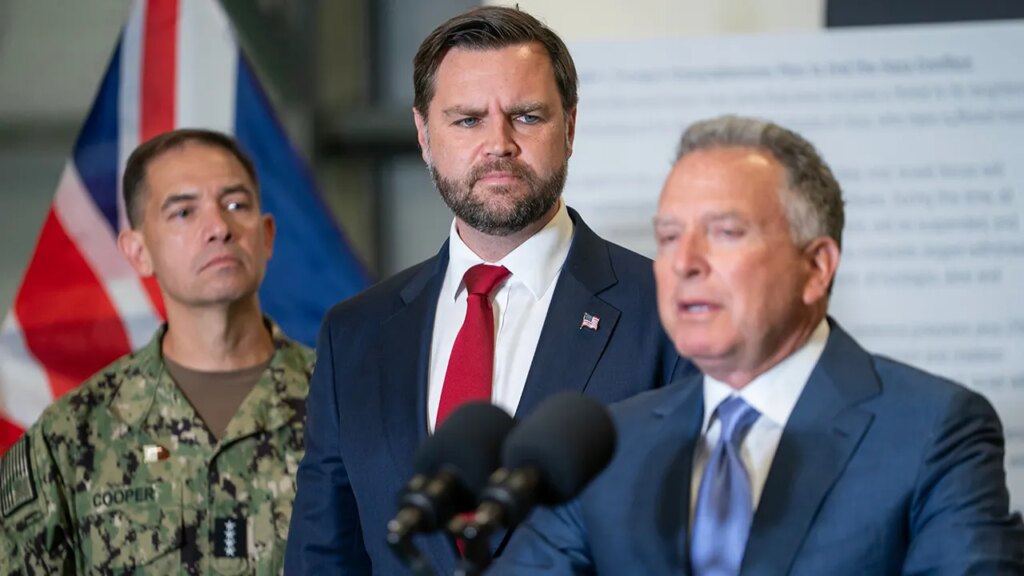In a significant development five days post the endorsement of a U.S.-brokered plan to cease hostilities in the Israel-Hamas conflict, the U.S. Central Command (CENTCOM) announced the opening of a Civil-Military Coordination Center (CMCC) in southern Israel. This center aims to serve as the primary point for international efforts to stabilize Gaza and is staffed by approximately 200 U.S. military personnel. The CMCC is focused on facilitating humanitarian assistance and cooperation among various stakeholders, without direct deployment of U.S. troops into Gaza.
| Article Subheadings |
|---|
| 1) Overview of the Civil-Military Coordination Center |
| 2) Objectives and Functions of the CMCC |
| 3) Key Personnel and Operational Structure |
| 4) Immediate Challenges Facing Stabilization Efforts |
| 5) Future Implications for Gaza and Regional Peace |
Overview of the Civil-Military Coordination Center
The establishment of the Civil-Military Coordination Center in southern Israel marks a critical step towards stabilizing Gaza amid ongoing humanitarian crises. Announced following a multinational agreement aimed at halting hostilities, the CMCC will act as a logistical hub for humanitarian and security assistance. Over the next few weeks, U.S. military personnel aim to facilitate the integration of various stakeholders, including representatives from partner nations and international organizations, to ensure a coordinated approach to stabilization efforts. This initiative comes amid a backdrop of sustained violence and instability in the region.
Objectives and Functions of the CMCC
The CMCC is designed with specific objectives in mind, primarily focusing on supporting humanitarian operations in Gaza. The center will oversee the distribution of aid while also ensuring that logistical and security measures are in place to protect both the personnel involved and the local population. According to officials, the facility’s operations floor is equipped for real-time tracking of developments, which will prove instrumental in monitoring the ceasefire agreement’s implementation. Furthermore, the CMCC aims to work with non-governmental organizations and other international institutions to enhance the effects of their humanitarian missions.
Key Personnel and Operational Structure
Led by U.S. Army Central commander Lt. Gen. Patrick Frank, the establishment of the CMCC involves key figures from various military sectors. The center will house a team of approximately 200 U.S. service members specializing in areas ranging from planning and logistics to engineering and security. Their roles are designed to foster an environment conducive to cooperation among diverse organizations, facilitating the timely delivery of aid to Gaza, and addressing the critical issues on the ground. CENTCOM commander Adm. Brad Cooper emphasized the necessity of collaboration among stakeholders to achieve successful stabilization in the region.
Immediate Challenges Facing Stabilization Efforts
Despite the establishment of the CMCC, various challenges remain that could hinder stabilization efforts. Presently, there are concerns regarding the extensive network of tunnels beneath Gaza City, which complicate construction and stabilization initiatives. Additionally, Hamas’ delayed return of hostages’ remains has stalled the next phase of the peace deal. While Israel is firmly committed to recovering every hostage, the complexity of the situation adds layers of difficulty to the stabilization efforts. U.S. officials recognize that swift action is critical to maintaining the momentum of the peace initiative.
Future Implications for Gaza and Regional Peace
Looking ahead, the success of the CMCC could play a pivotal role in reshaping the future of Gaza and the broader region. The center’s ability to monitor and coordinate humanitarian efforts effectively may pave the way for a more stable governance structure in Gaza, potentially improving the standard of living for its residents. As international stakeholders converge on the CMCC, the potential for establishing long-lasting peace agreements will depend on true collaboration and commitment to the shared goal of stability. Observers remain cautiously optimistic but emphasize that sustained efforts will be required to overcome historical tensions and promote reconciliation in the region.
| No. | Key Points |
|---|---|
| 1 | The CMCC aims to stabilize Gaza through coordinated humanitarian efforts. |
| 2 | Approximately 200 U.S. military personnel have been deployed to support the CMCC. |
| 3 | Key functions of the CMCC include monitoring the ceasefire and ensuring effective delivery of aid. |
| 4 | The center faces challenges such as Hamas’ ongoing hostage situation and complex ground conditions in Gaza. |
| 5 | The CMCC’s success may serve as a foundation for long-term peace agreements in the region. |
Summary
The opening of the Civil-Military Coordination Center in Israel signifies a concerted effort by the U.S. and international stakeholders to stabilize Gaza following a tumultuous period marked by conflict. With the involvement of military personnel and various organizations, the CMCC aims to facilitate effective humanitarian assistance and foster conditions conducive to peace. However, challenges remain, and the success of this initiative could have lasting implications for regional stability and governance in Gaza.
Frequently Asked Questions
Question: What is the purpose of the Civil-Military Coordination Center?
The CMCC is established to facilitate humanitarian, logistical, and security assistance in Gaza, aiding in stabilization efforts following the Israel-Hamas conflict.
Question: Who is overseeing the CMCC’s operations?
The CMCC is overseen by U.S. Army Central commander Lt. Gen. Patrick Frank, and staffed by about 200 U.S. service members with expertise in various fields.
Question: What immediate challenges does the CMCC face?
The CMCC faces challenges such as Hamas’ delay in returning hostages’ remains and the complex conditions created by a network of tunnels beneath Gaza City.


